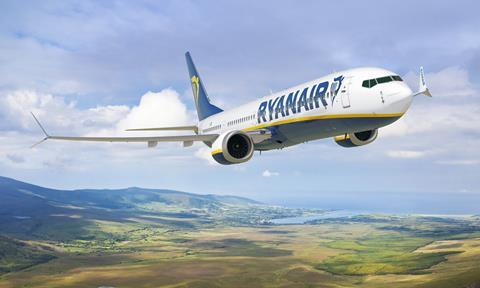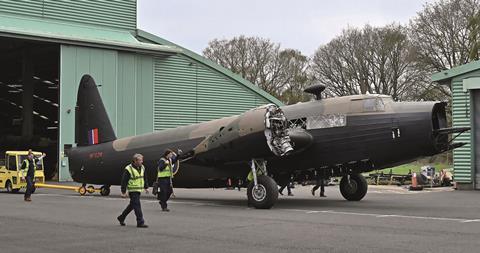The lighter side of Flight International.
Ryanair’s big problem
Ryanair’s agreement to take the Boeing 737 Max 10 will present the airline with an operational vulnerability as it adapts to the larger aircraft type.
While group chief financial officer Neil Sorahan, during a briefing on the deal, deadpanned that the airline will be putting in “very comfortable first-class seats for all of our customers”, chief executive Michael O’Leary considered the practicality of maintaining 25min turnaround times with a 228-seat jet.

“We’ll be [having] special training programmes for our customers for the next 10 years on how to move faster, travel with fewer bags,” he said. “We have no doubt we’ll do 25-minute turnarounds when it’s raining. But when it’s sunny and we’re getting them on and off the back of the aircraft, this is going to be a challenge.”
O’Leary says the airline will be working closely with its customers to “incentivise” them, but he’s obviously just joking. Maybe. Perhaps.
Wellington reboot
Experts have restored a Second World War Vickers Wellington to its original glory after more than 10 years of work.
The bomber – one of only two remaining – is now on public display at the Royal Air Force Museum Midlands’ new Bomber Command exhibition.
The Wellington, with its Barnes Wallis-designed geodetic fuselage, was a night bomber in the early years of the conflict, and by 1942 had become the most numerous type in Bomber Command before four-engined bombers such as the Halifax and Lancaster began to replace them.

Vickers built the museum’s example in 1944 and it served with the No 1 Air Navigation Training School from 1949 to 1953. Although it was not operational during the war, the museum says the example represents the bomber’s contribution to the war effort.
It had been on display at the RAF Museum’s site in London until 2010, before moving to the Conservation Centre in the Midlands for treatment on corrosion to its structure and replacement of its fragile, Irish linen skin.
What the blazes?
Sometimes a news headline does not deliver the story expected, and so it was when we read: “Car completely destroyed in fire on A380”.
Was this a bit of massive aviation safety news that had somehow evaded industry journalists worldwide – but been picked up by the… er… Teignmouth Post?
Perhaps the source should have provided a clue.
The A380 is the A road that connects Torbay and Exeter. A conflagration in an abandoned Volvo – no injuries reported – was no doubt interesting news in a corner of south Devon, but probably did not account for the story becoming one of the most-viewed articles that day on a certain UK news aggregation site.
Just for lavs
Kudos to someone at the European Union Aviation Safety Agency (EASA) for their choice of phrasing when they were drawing up a recent airworthiness directive on Airbus A350 lavatories.
The 17 May directive refers to discovery of corrosion on floor fittings, and instructs operators to conduct repetitive inspection on the affected parts.
EASA warns that the condition could lead to “lavatory module detachment”, with possible injury to cabin crew or passengers.
But it also cautions that the sudden departure of the toilet from its foundations could result in “reduced evacuation capacity”.
Flying pics
A quick final plug for the Guild of Aviation Artists’ Aviation Paintings of the Year exhibition. If you missed the show at the Imperial War Museum, Duxford over the weekend of 23-25 June, there is a chance to view the works at gava.org.uk


























